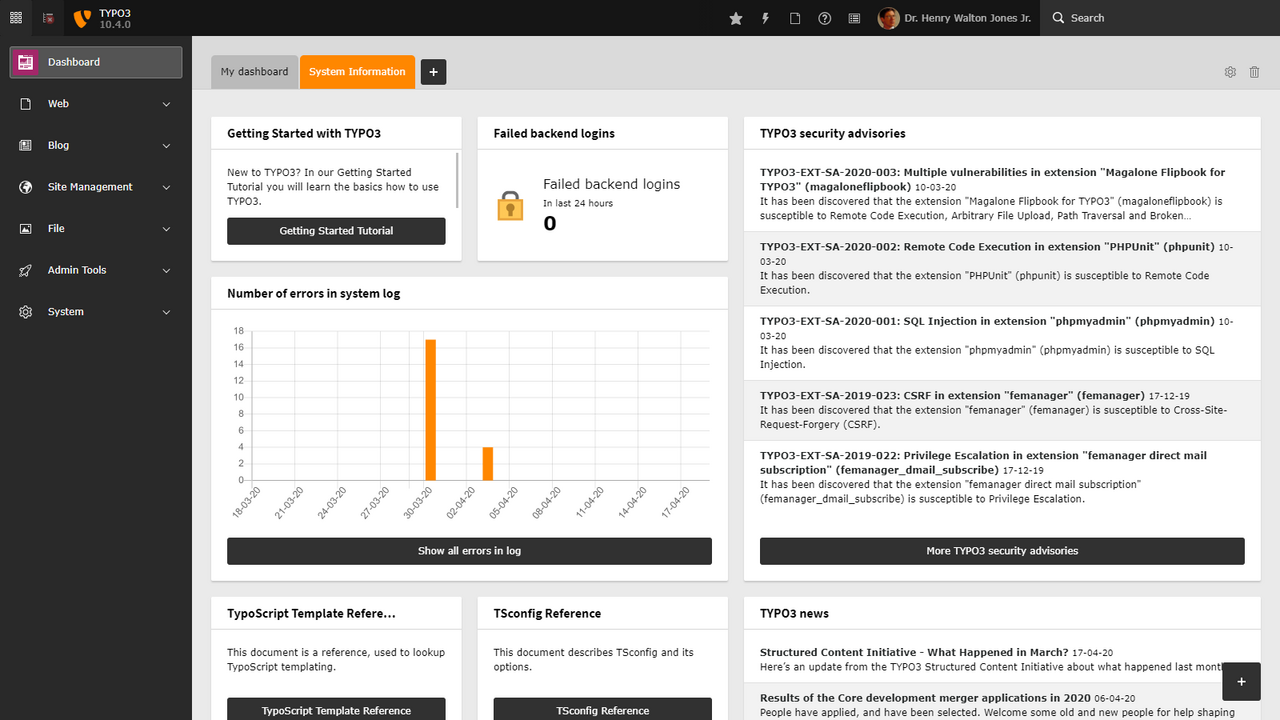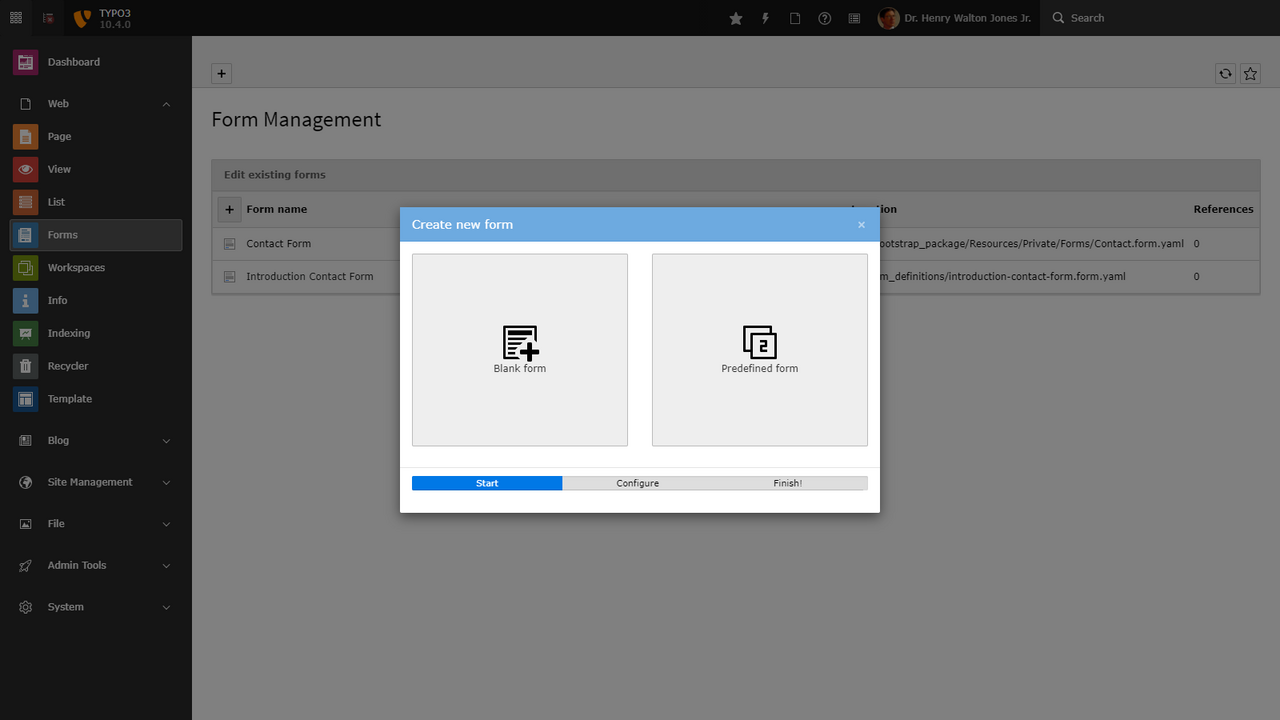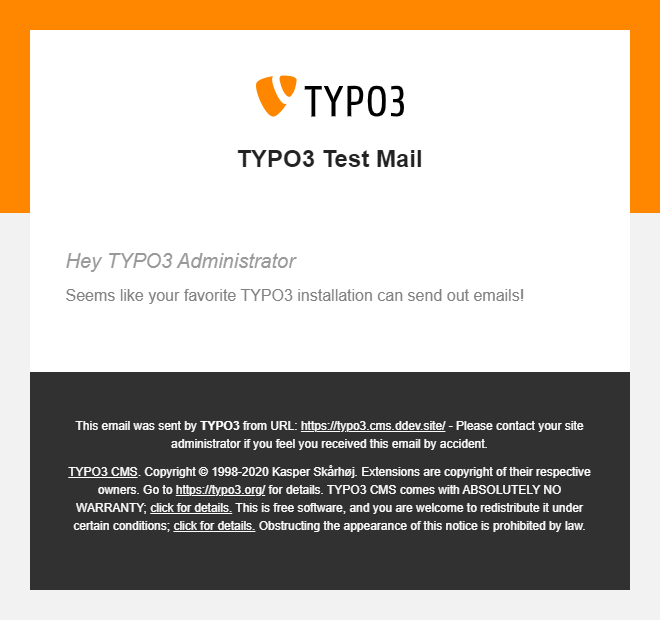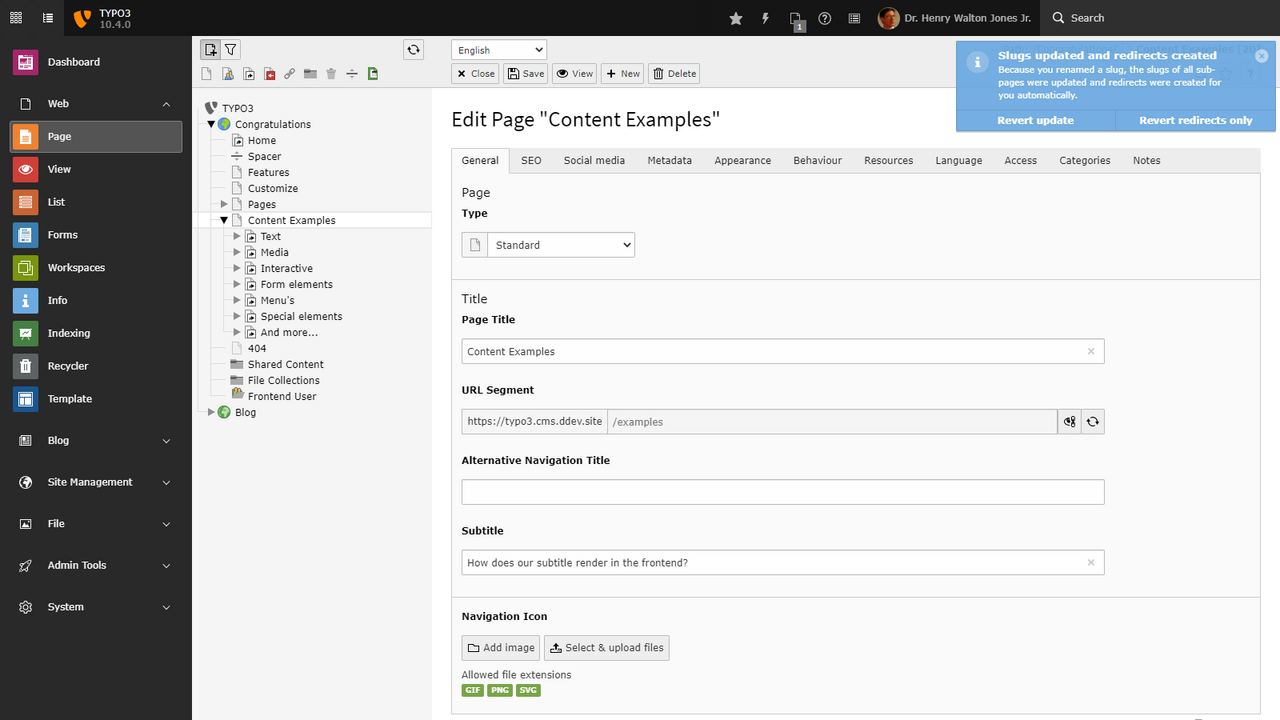
Benefits of TYPO3 v10 LTS for Business Users
TYPO3 — Top 10 reasons to use the open source enterprise CMS
Looking for a scalable and reliable open source enterprise CMS? TYPO3 is an up-to-date and powerful open source platform for enterprise content management backed by a large community, an official association, and a professional company, which enables people around the globe to deliver content-rich digital experiences on any channel, any device, in any language at any time.
Go for the brand new TYPO3 v10 LTS content management system and get started right away!
If your websites are on an older version of TYPO3, now is a great time to upgrade to the latest and greatest version. You’ll get many improvements and the longest lifespan for your investment. The catchphrase for TYPO3 v10 LTS, 'Safe and Sound', refers to the overall improved performance and stability of this version. Many improvements are under the hood, so I’ve gathered some feature highlights that business decision-makers will love to see.
What’s different?
- Introducing the Dashboard. When users log in, they see a customizable, modular, landing page giving them at-a-glance information. Excellent out-of-the-box widgets display statistics or news feeds. You can also build your own widgets to help backend users.
- Translations with Crowdin. TYPO3 now uses Crowdin to manage, import, and edit translations of the core and custom code as well as extensions. TYPO3 backend users can use TYPO3 in their own language, which saves time onboarding new users. Read Better Multilingual Support.
These are just some of the highlights. Read about more UX improvements in v10.
What does it mean for our backend users and integrators?
With better user experience, backend users can get their jobs done quicker and more efficiently. Developers can save time and work with fewer errors. Now it’s easier to produce translations, so teams can work in their native language. And with the Dashboard, you can provide quick links and calls-to-action to help editors stay productive.
2. Better security through better user experience
What’s different?
- Permissions management. Easier to manage users and see user details at a glance. Compare user accounts and user groups to review permissions.
- Frontend login. Adjust validators so users can’t choose insecure passwords.
- Secure password reset. Users can securely request a new password with a time-limited validation link that is sent to their email address. There’s a limit to how often passwords can be requested to prevent abuse. If there’s no existing user, the system will make it look like a success so that abusers can’t guess account information.
How does it help us keep websites secure?
These are examples where an improved user interface actually makes websites more secure.
By making it easier to enforce stronger passwords and providing password reset by email, TYPO3 v10 LTS keeps user logins more secure. In addition, it enables integrators to apply the principle of least privilege (POLP) to ensure users and groups have the least amount of access they need to do their jobs, thanks to a better UI for comparing user and group permissions.
3. Lazy-loading images delivers faster performance and enhanced UX
What’s different?
TYPO3v10 LTS is the first CMS to support lazy-loading images out of the box. While browsers are still working on adopting this specification, TYPO3 v10 LTS is ready! If you’re curious, check CanIuse.com to see which browsers support lazy loading.
How does lazy loading enhance the user experience?
Thanks to lazy loading, a visitor can get most of the content they need quickly. This makes the website load faster.
How does lazy loading speed up performance?
The images get downloaded as placeholders and only appear fully when a user needs them. This means if a user doesn’t continue scrolling down, the image isn’t fully downloaded from the server. This means fewer resources get transferred and that means less load on the server.
What’s different about creating and managing forms?
- User-friendly Form Framework Wizard to create forms like lead generation or contact forms faster.
- Assign multiple recipients for the form responses, including assigning them as CC and BCC.
- Streamlined setup for integrators because there’s only one general configuration file to set up.
How does this help?
Now the better step-by-step wizard means content editors can make forms more easily. When it comes time to customize the forms, integrators can get an overview of the complete setup thanks to one setup file.
What’s different?
Before, system-generated emails in TYPO3 were pretty plain, at least out-of-the-box. Now TYPO3 v10 LTS offers HTML-based system emails that can be customized, for example with the right colors and logos that your users expect to see.
How do HTML based emails improve branding?
System emails use the colours and logos you set in your backend. They’ll be customized as soon as you upgrade your system. If you want to be more fancy, now it’s easier for developers to use the Fluid templating engine in TYPO3 v10 for customizations. This means your users will get notifications and be able to recognize where these messages are coming from.
What’s different?
- When you update a URL, TYPO3 will automatically update the URL segment and provide a redirect to avoid breaking existing links.
- Get a notification when a URL is updated.
- Detect conflicting redirects—so you don’t get errors coming from misconfigured URLs.
- Validate external links as you add them in the rich text editor.
How does this improve SEO?
A broken link is bad for business. It means people aren’t getting the information they need. Search engines also can’t crawl your website, and it means visitors just bounce instead of sticking around. Now, TYPO3 v10 LTS can catch and prevent broken links on-the-fly. Both visitors and search engine crawlers will be able to get all the information they need.
7. Easier developer adoption by adopting Symfony standards
What’s different now?
By standardizing on selected Symfony libraries, TYPO3 is now easier to adopt than ever before. Developers use these libraries and standards when they build custom software on top of TYPO3.
- Symfony Mailer API (Mime and Mailer packages)
- Standardized EventDispatcher (PSR14)
- Symfony DependencyInjection (PSR11)
TYPO3 has adopted these recommended standards referred to as PSRs, meaning PHP Standard Recommendation. This is a way for PHP projects and users to agree on best practices so they can share improvements and move PHP forward together.
How does this help me get to market faster?
For a long time, TYPO3 has had these features, but they were built in a “TYPO3 way.” Now these capabilities are being replaced by widely adopted standardized methods. This means work can be done more consistently, but it also means you can tap into a bigger talent pool.
Now it’s easier to get new developers up to speed. It also means TYPO3 works in a more intuitive way for users who are familiar with Symfony. The Symfony community has more than 600,000 developers; this will make it easier to expand your teams.
8. Keyboard navigation and search means better accessibility
What’s different now?
- Users can tab through the module menu, then browse through the page tree with the arrow keys, and tab through editing functions, etc.
- TYPO3 v10 now supports keyboard navigation, applying guidelines in the in WAI-ARIA Authoring Practices 1.1.
How does this help?
Accessibility ensures that content editors of all abilities can get their work done. Many integrators and content editors prefer to navigate with the keyboard rather than using a mouse.
9. More compatible extensions available now
What’s different?
- In the release livestream, Benjamin Kott reported there are 760% MORE compatible extensions available right now for TYPO3 v10 then there were when v9 was released.
- More than 170 compatible extensions are available in the TYPO3 Extension Repository (TER) already.
How does this help?
Right after major versions of CMS software is released, there’s usually a lag between the release and the availability of contributed extensions or modules. With TYPO3 v10 many extension maintainers have taken the chance to update their extensions. For many projects, there’s no need to delay upgrading to TYPO3 v10 now.
10. A safe and sound TYPO3 CMS supported until 2026
What’s different?
- Aside from our many improvements, nothing actually. TYPO3 continues to have a stable, predictable, and long software lifecycle.
- TYPO3 v10 LTS is now on the roadmap for three years of community support until April 2023.
- After that, TYPO3 GmbH offers an Extended Long Term Support (ELTS) with support up to April 2026.
How does this help?
TYPO3 GmbH provides ELTS to give TYPO3 projects longevity. By upgrading to TYPO3 v10, early in the life cycle, you get the longest possible support.





